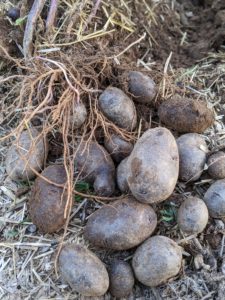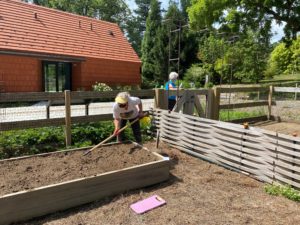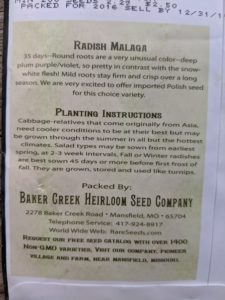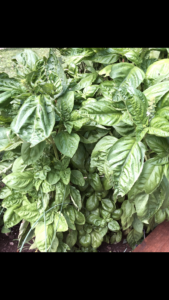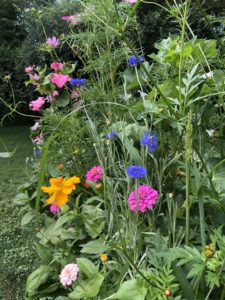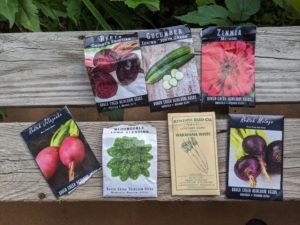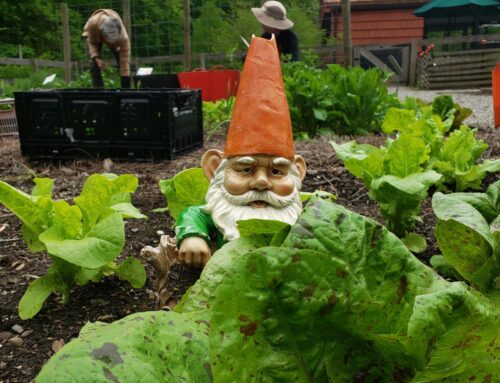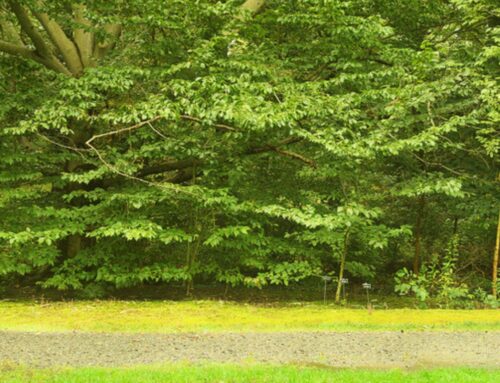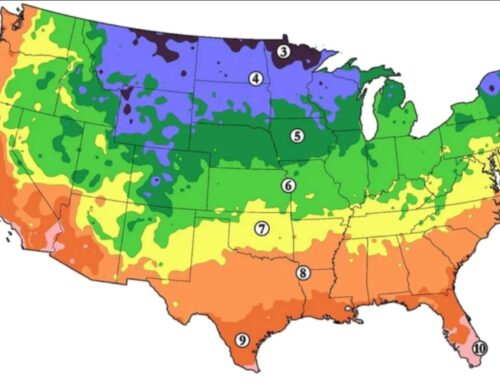Would you like to use your garden space more efficiently? Are you wondering what can be planted in July? Our gardens have been giving back to us after months of tending to them. We’ve harvested lettuce, spinach, peas and onions. The first of the potatoes have been dug, and we’ve just picked the garlic to hang to dry. Now we’re faced with some bare spots, and the first frost date is at least three months away. We need to do a ‘second planting’, which is known as Succession Gardening. When one crop finishes, we start another crop. But what can we plant in mid-summer, in all of this heat? Actually, there are quite a few options, but where do we start?
Let’s look at what differs now as compared to our spring sowing:
- The soil has warmed up along with the daytime and nighttime air temperatures. This may mean we plant seeds about two times more deeply to avoid having them dry out. It also means our seeds are likely to germinate more quickly if kept moist. Keep in mind that most seeds won’t germinate in soil temperatures over 90 degrees F.
- The soil may be dryer or even too hot, although this will vary year to year. We will have to pay closer attention to watering needs as compared to spring conditions. We may need to shade an area, or plant behind a trellis to find a cool area. The use of straw mulch is another option to shade the soil from the direct sun.
- There is much more daylight now, and we will continue with at least 12 hours of sunlight until the end of September. This is good news for many of our favorite vegetables that require long hours of daylight to flower and then produce our food. Once we have under 10 hours of sunlight (late October), most plants stop producing flowers.
- There is less time for crops to grow, so we need to look for those that mature more quickly.
- There are more insects looking for free meals in July. If you are overrun with squash borers, you may not want to plant more squash right now. Understanding the life cycle and food preferences of your harmful insects will allow you to have insight on the best planting time.
- After already providing for the initial crop, the soil will need a boost with compost or leaf mold.
As always, the back of your seed packets contains a good deal of information. Be sure to note the number of days to maturity after germination, adding in a week or two due to the shorter days ahead. Then you can count back from the average first frost date for your zone. Let’s look at plants that love to be in warm soil and warm air, which is just what we need in July and early August:
-
- Bush beans, pole beans and lima beans like the heat and are great choices. The beans are easy to freeze or can for winter use. You can try sowing different varieties every 7-10 days this month to provide a continual late summer and fall harvest.
- Corn can also be a good option if planted right now, but look for an early maturing variety that will be ready in 70-80 days. While it loves the warmth, it also requires consistently moist soil.
- Cucumbers, squash, gourds and pumpkins are also good choices if you have room for vines to roam. You can also look for bush varieties for many of these crops, although some have the opinion that bush varieties don’t taste quite as good. Try one and see for yourself.
- Let’s not forget the herbs. Basil, cilantro and dill are three good choices. If your initial planting of basil has gone to seed, a stem is easily rooted in water and ready for planting in July.
- Perhaps you’d like to try something new? Daikon radish or Chinese cabbage may be a good choice for you, seeded in at the end of the month.
- It’s visually appealing to have some flowers to provide both color and to attract pollinators. There is plenty of time for marigolds and nasturtiums to flower, with the added benefit of combating pests. Zinnia’s will provide you with color, fresh bouquets and attract pollinators to your garden.
- Crops in the brassica family – cabbage, broccoli, collard greens – and also other greens such as chard, escarole and radicchio can be planted in the next few weeks for a great late fall harvest. July is the time to start these seedlings so they are ready to transplant out in 4-6 weeks. Most crops in the brassica family can tolerate a light frost and actually taste better when sown later in the season.
By the end of August, the list of vegetables to plant into the garden changes, and includes carrots, radishes, lettuces, onions, spinach and the brassica family mentioned above. With planning and dedication, your garden can continue to produce past the first frosts we expect in October.
If you need some extra planning assistance, many of the seed companies offer garden planners and assistance. Johnny’s Selected Seeds offers a succession planting calculator, Territorial Seeds offers a planting chart, and Burpee provides a customizable growing calendar. Including one of these tools in your annual garden planning will help you get the most out of even a small garden plot.
Happy planting everyone!


